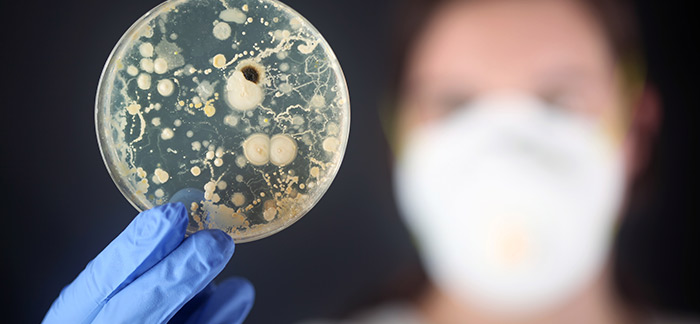|
Are you someone who uses supermarkets trolleys, holds onto escalator rails or dries their hands under public toilet hand-dryers? Well, chances are you’ve ended up bedridden with some nasty bug that’s infected you through one of these things.
In truth, the last thing we need in our everyday lives is the inconvenience of getting ill. When it happens, it seems to strike out of nowhere, but often it’s the most mundane places packed with invisible germs that are the culprit.
|
|
What are germs?
|
|
Germs come in many forms including microscopic bacteria viruses, fungi and protozoa. Most are completely harmless to human beings but those that do target us can range from mild to lethal.
The good news is that knowing where these germs lurk goes a long way in helping us avoid them.
Germs that affect humans are generally carried by humans. Thus, the places that see the highest human traffic are often the places with the highest concentration of germs. It is around these places that we need to be most careful.
Obvious germ hotspots include public bathrooms, children’s playgrounds, restaurants, games centres, gyms, supermarkets and public transport where surfaces are touched by hundreds if not thousands of human hands every day. But what about the not-so-obvious hotspots?
|
|
Not-so-obvious germ-infested hotspots
|
|
|
- Think about an airplane, where 300 passengers’ sneezes and coughs are circulated throughout the cabin – this is one of the easiest places to catch a bug.
- What about those communal snack bowls plundered by fellow party goers? If just one person has bronchitis, everyone else is at risk.
- Oh, and don’t forget your trusty toothbrush! If you haven’t replaced it within the last six months, chances are it’s infested with bacteria. Time to get a new one!
- You’ll also be shocked to hear that resent studies show the average work desk harbours 20,961 germs per square cm and that’s in addition to 3,295 on the keyboard and 1,676 on a mouse and a staggering 25,127 on a phone. That’s 400 times more germs than the average toilet seat!
- And, of course, watch out for those communal internet banking computers at banks, well-used toy boxes that our children use at the local coffee shop and those finger scanners you use daily at work. These are seldom – if ever – wiped down between users.
|
|
How can I avoid germs?
|
|
|
|
Importantly, there’s no need to become a germophobe! In reality, you’ll never be 100% safe from germs, but you can greatly reduce your risk of getting infected by introducing these five simple habits into your everyday lives:
- Keep yourself and your family up to date with recommended vaccinations and boosters. Most are government issued and free of charge so there is really no excuse. These offer excellent protection against a host of nasty germs that lurk in our society.
- Make a point of washing your hands with water and soap after using public facilities and communal items such trolley handles, elevator buttons, finger scanners and public pens. Use alcohol-based hand sanitiser gel/wipes in the absence of hand-washing – particularly before eating.
- Wipe down your vehicle’s steering wheel, your workspace, computer keyboard and phone from time to time.
- Wear a surgical mask in high risk environments such as airplanes, public trains and buses – you would be surprised how many people you see wearing masks in Hong Kong and other parts of Asia (a remnant of the 1997 bird flu outbreak).
- Most importantly, get out of the habit of touching your face. Germs often gain access into our bodies through our eyes, ears, nose and mouth … so avoid touching them with hands that haven’t been freshly washed. Nose picking and nail-biting are other big no-no’s, so rather use tissues and nail scissors.
|
|
Get on with your life
|
|
We should never let the fear of germs impede our everyday lives - get out there and live your life to the fullest. Just adopt these good habits into your lifestyle and you will spare yourself countless bouts of unnecessary illnesses.
|



